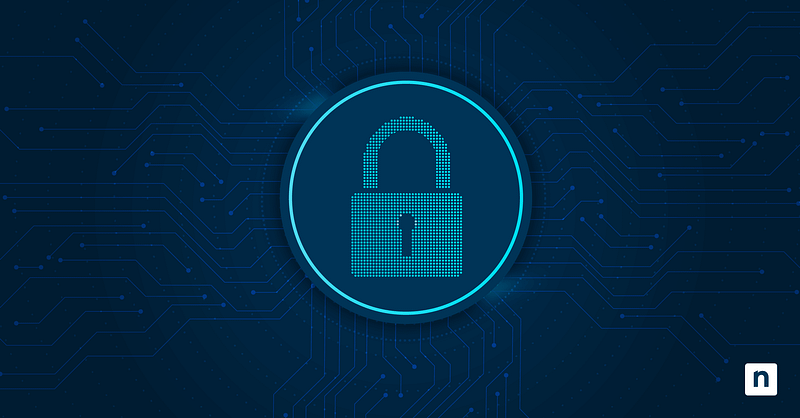Today’s cyber threats exploit complexity faster than legacy defenses can respond. Attackers move laterally, chaining vulnerabilities across fragmented systems — while businesses demand always-on performance and strict regulatory compliance. Defense in depth meets this challenge head-on by layering security across endpoints, networks, and applications, transforming broad risk into controllable exposure.
What is defense in depth?
Defense in depth is a cybersecurity strategy that applies overlapping controls at multiple levels of your IT infrastructure. It assumes that some defenses will fail, so it builds in redundancy. The goal is to limit the damage of any single compromise and ensure business continuity through layered resilience.
Why is defense in depth important for modern cybersecurity?
Today’s attacks are rarely isolated. They’re multi-stage, targeted and designed to bypass specific tools. Single-layer security approaches are easy for specialized attackers to defeat. Layered defenses, on the other hand, increase the cost and complexity of an attack. By combining different technologies across the stack, organizations gain both deeper protection and operational flexibility.
Single point of failure elimination
Redundancy is central to defense in depth. A firewall failure shouldn’t expose your entire network. VLAN segmentation and tightly scoped access control lists contain threats early, while intrusion detection systems monitor internal traffic for signs of compromise.
This principle carries across the stack. Endpoint detection flags threats that evade the network perimeter. At the infrastructure level, backup authentication, parallel monitoring paths and failover mechanisms ensure security remains intact even during system outages or degradation.
Attack surface reduction strategies
The more doors you leave open, the easier it is for attackers to get in. Layered security shrinks the attack surface by closing gaps and limiting lateral movement. Each control reduces exposure and increases friction for would-be intruders.
A well-structured approach includes:
- Network segmentation that isolates critical systems from general access
- Application-level firewalls that inspect traffic beyond ports and protocols
- Endpoint detection platforms that flag suspicious behavior on devices
- Zero-trust access controls that verify every request regardless of source
Breach containment capabilities
Even the best defenses can be breached. The difference lies in what happens next. Containment strategies limit the blast radius by segmenting high-value assets, inspecting internal (east-west) traffic and detecting abnormal behavior in real time.
When done right, containment keeps the incident localized, reduces recovery time and preserves trust even under pressure.
Compliance requirement alignment
Defense in depth naturally satisfies multiple compliance frameworks, including NIST, ISO 27001 and PCI DSS. These standards mandate layered approaches across network controls, endpoint protection, data encryption and access management categories that you will routinely implement.
Compliance frameworks require audit trails demonstrating due diligence through comprehensive security measures. Layered architectures generate documentation and evidence that auditors need while providing technical controls that meet regulatory requirements.
Core layers of a defense in depth architecture
Effective architectures include five to seven complementary layers. Each should serve a distinct purpose without duplicating effort.
Perimeter security controls
Deploy next-generation firewalls combining packet filtering with deep packet inspection, application awareness and threat intelligence integration. Configure web application firewalls to analyze HTTP/HTTPS traffic for malicious patterns before attacks reach backend servers.
Implement logging and alerting mechanisms, providing visibility into blocked and allowed traffic patterns. Set up firewall rules aligning with application requirements while maintaining security policies across all network entry points.
Network segmentation barriers
Network segmentation creates logical boundaries limiting attacker movement and containing potential breaches. Solutions extend beyond traditional VLAN separation to include software-defined perimeters and micro-segmentation technologies. Proper segmentation requires careful planning to balance security with operational requirements.
Make sure that:
- VLAN configuration separates user groups and system types into isolated broadcast domains.
- Access control lists filter inter-segment traffic based on specific security criteria.
- Software-defined networking enables dynamic policy enforcement across virtual and physical infrastructure.
- Micro-segmentation creates individual security zones around critical applications and databases.
Endpoint protection measures
Today’s endpoint platforms go far beyond basic antivirus. They blend behavioral analysis, machine learning and threat hunting to detect threats early and respond fast. When integrated with network security tools, they share intelligence in real time and trigger coordinated defenses automatically.
To get the most from these platforms, align endpoint policies with your network access controls. That way, protection feels seamless, no disruption to legitimate users, just a hard stop for anything risky. Add device compliance checks to ensure only secure, trusted devices ever touch the network.
Data encryption and access controls
Protecting sensitive data starts with the right encryption and access strategy. That means securing web traffic with TLS, VPNs with IPSec and databases with strong encryption at rest. But the real value comes from tying it all together.
Set up certificate lifecycle management to avoid lapses, and connect it with identity platforms for centralized, consistent authentication. Use key management systems that handle encryption across layers without sacrificing performance. And don’t stop at the perimeter — enforce access controls that validate permissions even inside trusted zones.
Implementation challenges and common pitfalls
Defense in depth implementation presents technical and operational challenges stemming from managing multiple security technologies while maintaining network performance and user accessibility.
Layer overlap and redundancy issues
Avoid deploying multiple security tools performing identical functions, creating management overhead while potentially interfering with each other’s operations. Map security functions across your infrastructure to identify unnecessary duplication while ensuring adequate coverage.
Configure complementary rather than competing security controls. Set up firewalls handling perimeter filtering while intrusion detection systems monitor internal traffic patterns for different threat indicators.
Management complexity concerns
Multiple security layers significantly increase operational complexity through separate management interfaces, logging systems and policy configuration requirements. This complexity overwhelms IT teams and leads to misconfigurations and possible security gaps.
Implement standardized procedures and comprehensive documentation across all security technologies. Deploy security orchestration platforms providing centralized management capabilities to reduce administrative overhead and maintain security effectiveness.
Cost and resource allocation
Defense in depth requires significant investment across multiple security technologies, staff training and ongoing operational expenses. Organizations often underestimate total ownership costs, focusing on initial acquisition while overlooking implementation and management expenses.
Proper budgeting must account for:
- Technology acquisition costs for multiple security platforms and licensing requirements.
- Staff training expenses to develop expertise across different security technologies.
- Ongoing operational costs, including maintenance, support and technology refresh cycles.
- Integration expenses to connect security tools and ensure interoperability across platforms.
Integration compatibility problems
Security stacks often struggle with fragmented tooling — systems using different data formats, protocols and management interfaces that don’t easily connect. Legacy platforms lack modern APIs, while newer solutions may not support older standards, creating costly gaps in visibility and response.
To avoid these issues, evaluate integration requirements as part of your procurement process. Prioritize tools that support standardized protocols, enable bi-directional threat intelligence sharing and allow coordinated response actions across your ecosystem.
Measuring the ROI of defense in depth
To prove the value of defense in depth, track metrics that reflect both performance and impact. Focus on detection rates, response times, containment success and cost per incident across all layers of your security stack.
Start with a clear baseline. Measure current performance before implementation and then monitor progress over time. ROI isn’t just about tech spend; it includes reduced downtime, improved compliance and increased stakeholder trust. Use integrated monitoring tools to generate clear, actionable reports that tie security improvements directly to business outcomes.
Simplify layered security with centralized control
NinjaOne’s RMM platform gives you full visibility and control over your defense in depth strategy across endpoints, networks and beyond. Monitor all layers from one interface, automate patching, streamline reporting and trigger coordinated responses fast. Try it now for free!








